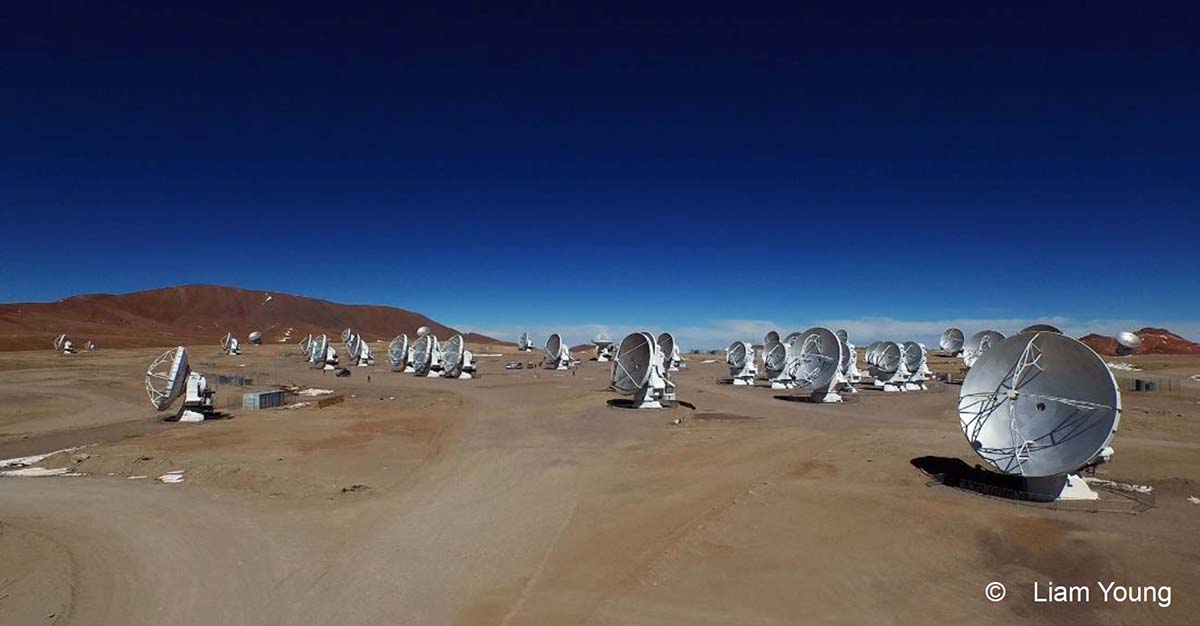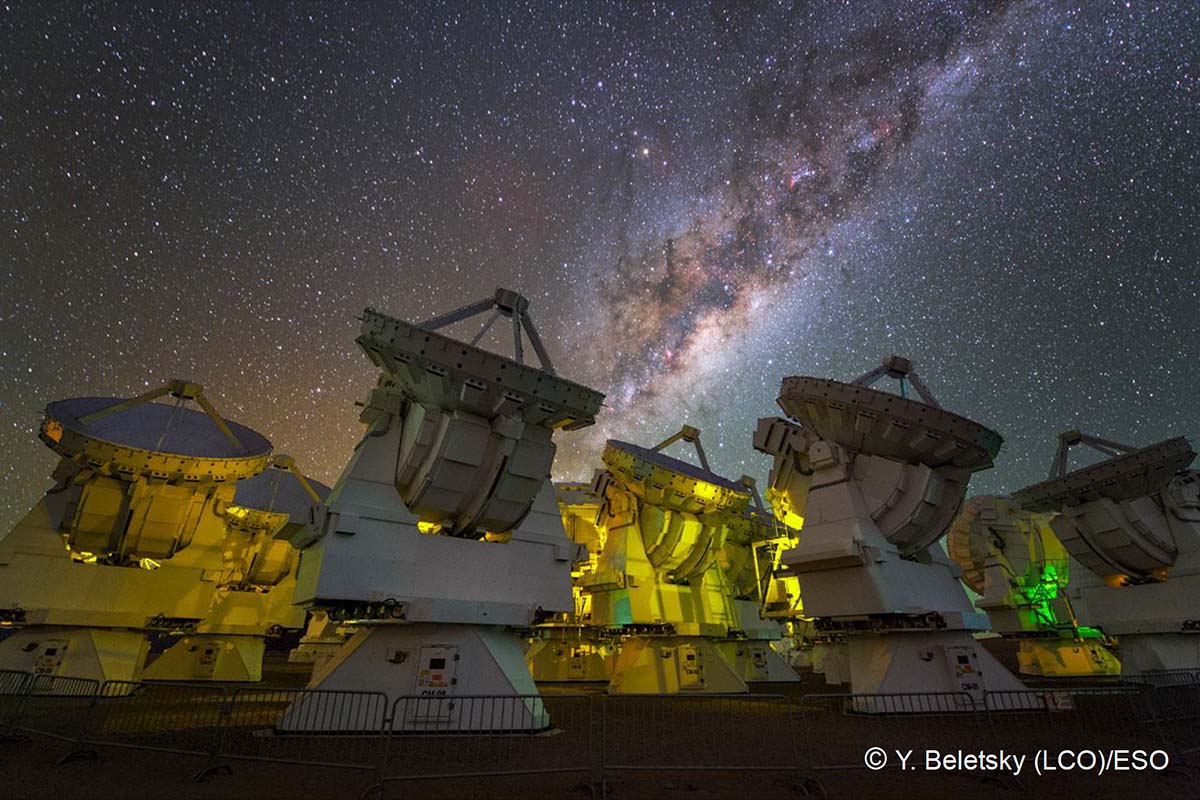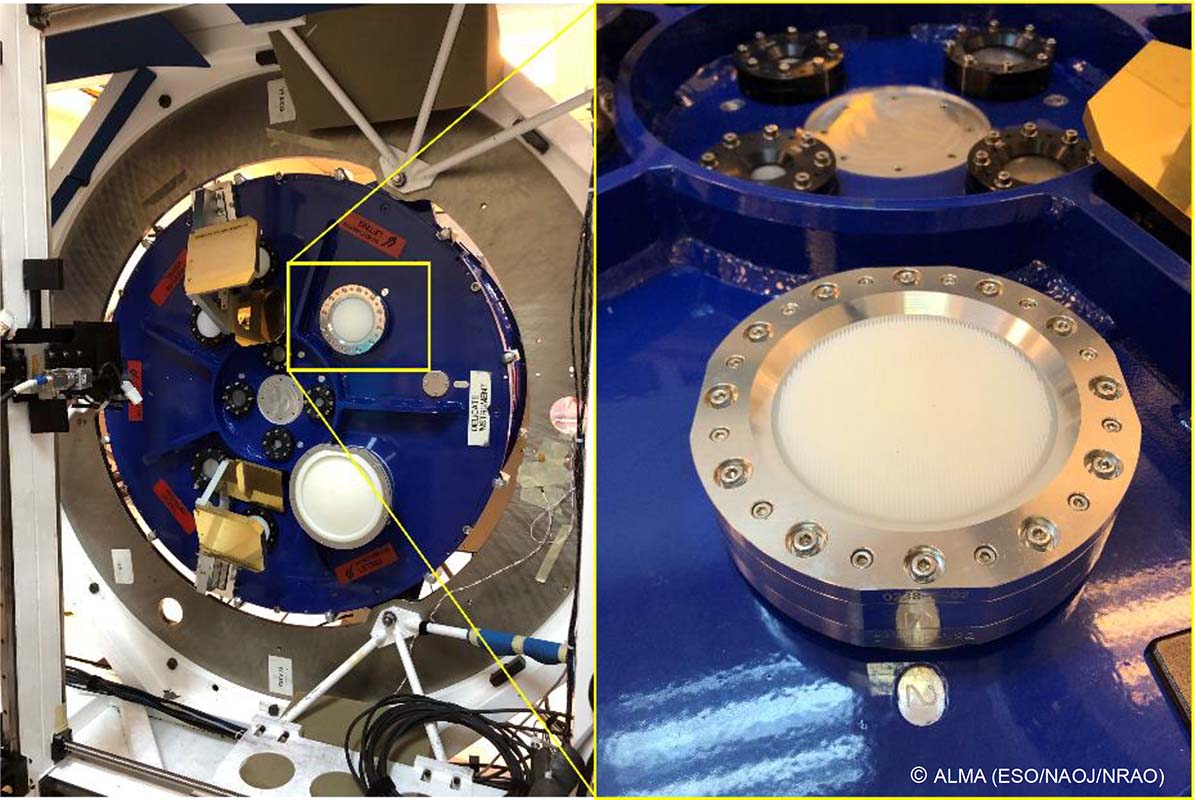Saxin NewLight™ Adopted as Lens Material for New ALMA Receivers
Expected to dramatically improve radio telescope performance in an effort to shed light on the mysteries of the universe
2023.08.24
Saxin Corporation
Mitsui Chemicals Inc.
Mitsui Chemicals, Inc. (Tokyo: 4183; President & CEO: HASHIMOTO Osamu) subsidiary Saxin Corporation (Otsu, Shiga; President: KAWACHI Hideshi) today announced that its mainstay product, NewLight™ ultra-high molecular weight polyethylene (UHMWPE) molding, has been selected as the lens material for new receivers at the Atacama Large Millimeter/submillimeter Array (ALMA). ALMA is an international telescope project with participants including National Institutes of Natural Sciences (NINS), National Astronomical Observatory of Japan (NAOJ) (Mitaka, Tokyo; Director General: TSUNETA Saku).
 ALMA antenna array
ALMA antenna array
 ALMA antennas observing space
ALMA antennas observing space
ALMA is operated via the collaborative efforts of 22 countries and regions, led by the NAOJ in Japan, the National Radio Astronomical Observatory (NRAO) of the United States and the European Southern Observatory (ESO). Located on a plateau around 5,000 meters above sea level in Chile, it is one of world's largest on-ground radio telescope, consisting of 54 antennas with a 12-meter diameter and 12 antennas with a 7-meter diameter. ALMA began full-scale operations in 2013, and has revolutionized mankind’s understanding of the birth of planets and the formation and evolution of galaxies, as well as having proved the existence of various simple organic molecules – which are the simplest building blocks of life – in the dust and gas disks where planets are being born.
The frequency range available to ALMA is divided into 10 different receiver bands, from 35 to 950 gigahertz (GHz) – equating to wavelength bands of 0.3 to 8.6 millimeters. NewLight™ has been chosen for the lenses to be used in the optical system of the band 2 receivers, allowing observation within the frequency range 67–116 GHz, with wavelengths of 2.6–4.5 millimeters. Radio telescope lenses need to allow the very weak high-frequency radio waves from astronomical objects to pass through with as little loss as possible. The lens material must also have uniform properties to maintain optical performance across the 66 antennas, as well as the ultraviolet (UV) resistance necessitated by their location at an altitude of around 5,000 meters. NewLight™ is a top-class resin that allows high-frequency radio waves to pass through with minimum loss. Saxin Corporation assisted the NAOJ ALMA project by leveraging these properties to supply a NewLight™ grade with enhanced UV resistance.

Left: Cooling vessel (Dewar) containing a receiver to be fitted to the radio telescope
Right: Saxin NewLight™ lens adopted for use in the radio telescope
Comment by KANEKO Keiko, National Astronomical Observatory of Japan
In the development of equipment, selecting materials that meet the requirements is one of the most important and difficult tasks. Upon evaluating the material’s physical properties under various conditions with the cooperation of Saxin staff, we have confirmed that NewLight™ will offer low loss, a stable dielectric constant and the ability to withstand an environment exposed to powerful UV rays. We look forward to seeing the results of future observations using receivers equipped with this lens.
Comment by Pavel Yagoubov, European Southern Observatory
We are very much looking forward to using this UHMWPE material for the ALMA project. The choice of material for the vacuum lens of the ALMA band 2 receiver is very important. It needs to have the required electromagnetic properties and low loss, while also being able to withstand the harsh conditions of low humidity and high ultraviolet radiation levels at the ALMA site.
Based on its VISION 2030 Long-Term Business Plan, the Mitsui Chemicals Group aims to create and expand a unique ICT Solutions business, with the objective of growing it into the third pillar of the Group’s basic strategy for transforming its business portfolio. Mitsui Chemicals’ ICT Solutions business strategy defines four business areas that the Group is working to bolster: semiconductor and assembly solutions, imaging solutions, battery material solutions and converting solutions. The Mitsui Chemicals Group also intends to contribute to the evolution and refinement of technology development for additional high-frequency applications.
Saxin Corporation website
National Astronomical Observatory of Japan website
NAOJ ALMA Project website

